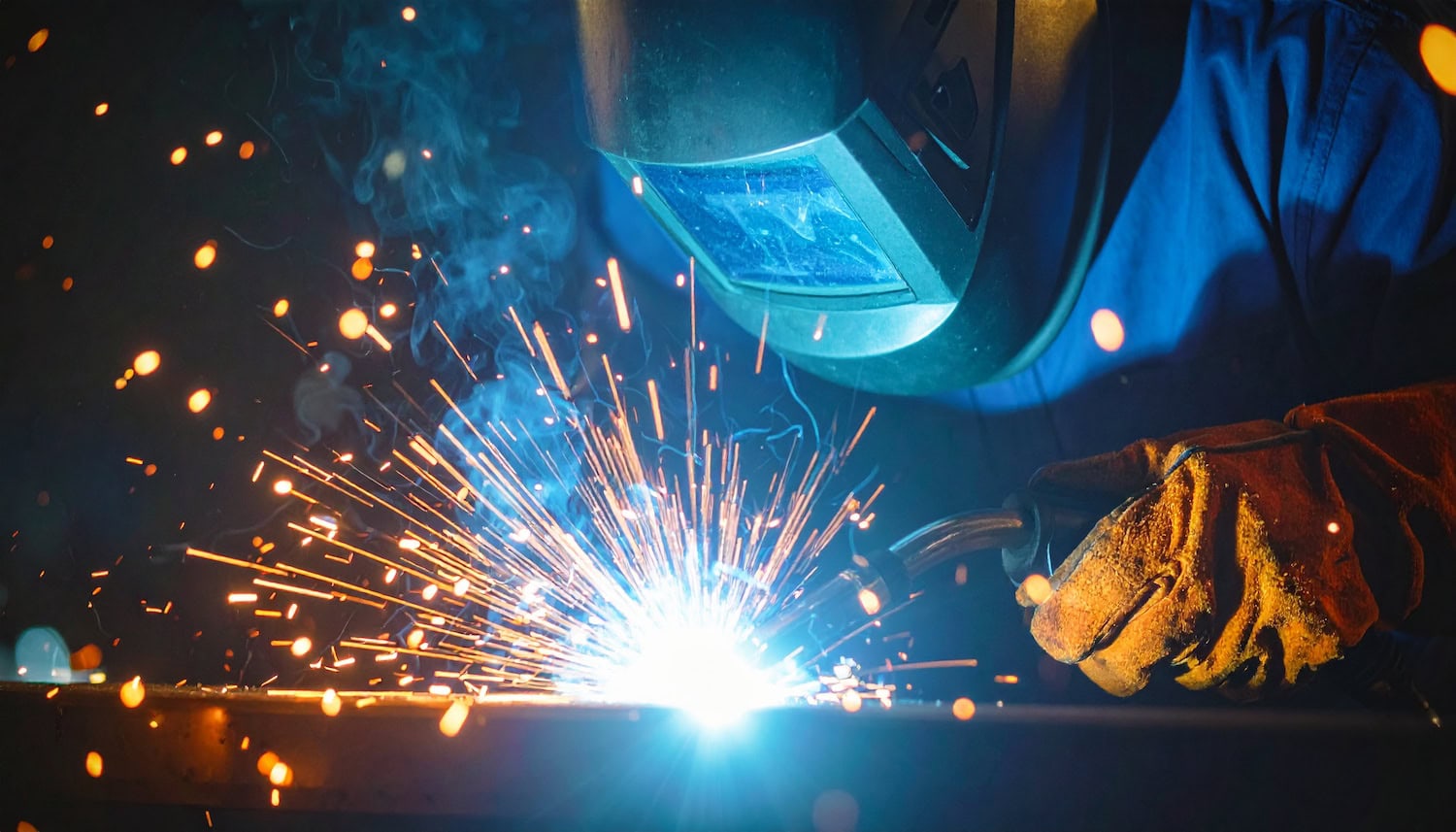An Introduction to Flux Core Welding
January 20, 2022

Flux core welding is a process used for almost every type of welding, from simple home repair projects to heavy fabrication. If you are just learning how to weld, flux core welding is a good process to begin with. It is less expensive than other types of welding and easier to learn.
Some projects work better with flux core welding than others. For example, it is not the best process to use if you need to have a visibly perfect weld. On the other hand, you will likely be satisfied with almost every other project you weld with flux core. Like other types of welding, it has advantages and disadvantages.
What is Flux Core Welding?
Flux core welding is one of the most common types of welding. It is also known as flux-cored arc welding (FCAW). It is DIY friendly for home use and is also used in the industrial world when heavy fabrication is needed.
The equipment and materials you need are a flux gun welder, a welding gun, the metal piece you are working on, and safety gear. You also need spools of welding wire which you feed through the welding gun. The flux core wire is made up of a filler material which is a compound made up of a mixture of alloys and deodorizers. When the flux is burned, it creates its own shielding gas that is needed to produce a clean weld. This gas protects the weld from atmospheric elements that can result in poor welds.
The flux-core process produces a slag that covers and protects the weld and holds it in place until it solidifies. When the weld is complete, simply brush away the slag.
Unlike in MIG welding, flux core welding does not require any shielding gas in order to produce a clean weld. This makes the process an ideal one for welding outdoors where the wind often blows away the shielding needed by other types of welding.
What Types of Projects Work With Using Flux Core?
One reason that flux core welding is such a popular welding process is that it is a flexible and versatile process. Flux core welding is also often used for making general home and construction repairs, for pipeline welding, for manufacturing, shipbuilding, and underwater welding. General construction projects also lend themselves well to this welding process.
Advantages of Welding With Flux Core
Flux core welding has the flexibility of working on all types of materials, even those that have been contaminated, unless the contamination comes from oil, water, or paint. Some of the most significant advantages include:
- The process is easy to learn.
- It is convenient in that it does not require extra equipment.
- It does not require a high level of manual dexterity.
- It is an ideal process for all welding projects including outdoor welding and does not need protection against atmospheric elements, not even the wind.
- It is a good process for welding dirty, rusty, or contaminated metals.
- It creates strong joints with fewer defects.
- Ideal for many metals, including carbon steel, high-nickel alloys, low-alloy steels, and stainless steel. The process does not work for welding aluminum.
- It can be a mobile process since a tank of shielding gas is not needed.
- The filler material can be applied at a high speed.
Disadvantages of Welding With Flux Core
- There may be a lack of precision since the process is not fully automated.
- Welding must occur in a well-ventilated area since it can be hazardous to work near toxic fumes or smoke.
- It is more expensive to use the electrode wire necessary for flux core welding than a solid electrode wire.
- To achieve a smooth, finished weld surface, slag removal is essential.
- The welding equipment used for flex core welding is generally more expensive than equipment used for other types of welding processes.
Contact Arizona’s Leader in Welding Supplies
Vern Lewis Welding Supply offers a wide range of welding products that can help you get started with flux core welding. Contact us today with any welding questions you have and our trained staff will be happy to help!
Sources:
- https://www.thefabricator.com/thewelder/article/arcwelding/start-with-the-basics-understanding-flux-cored-wires
- https://www.farmandfleet.com/blog/flux-core-welding-basics/#
- https://www.neit.edu/blog/fcaw-welding
- https://www.millerwelds.com/resources/article-library/flux-cored-welding-the-basics-for-mild-steel
- https://www.homedepot.com/c/ah/how-to-flux-core-weld/9ba683603be9fa5395fab90106562b3c
- https://garage.eastwood.com/eastwood-chatter/what-is-flux-core-welding/
Join Our Newsletter
Sign up for our newsletter to receive specials offers, product updates, and more!






